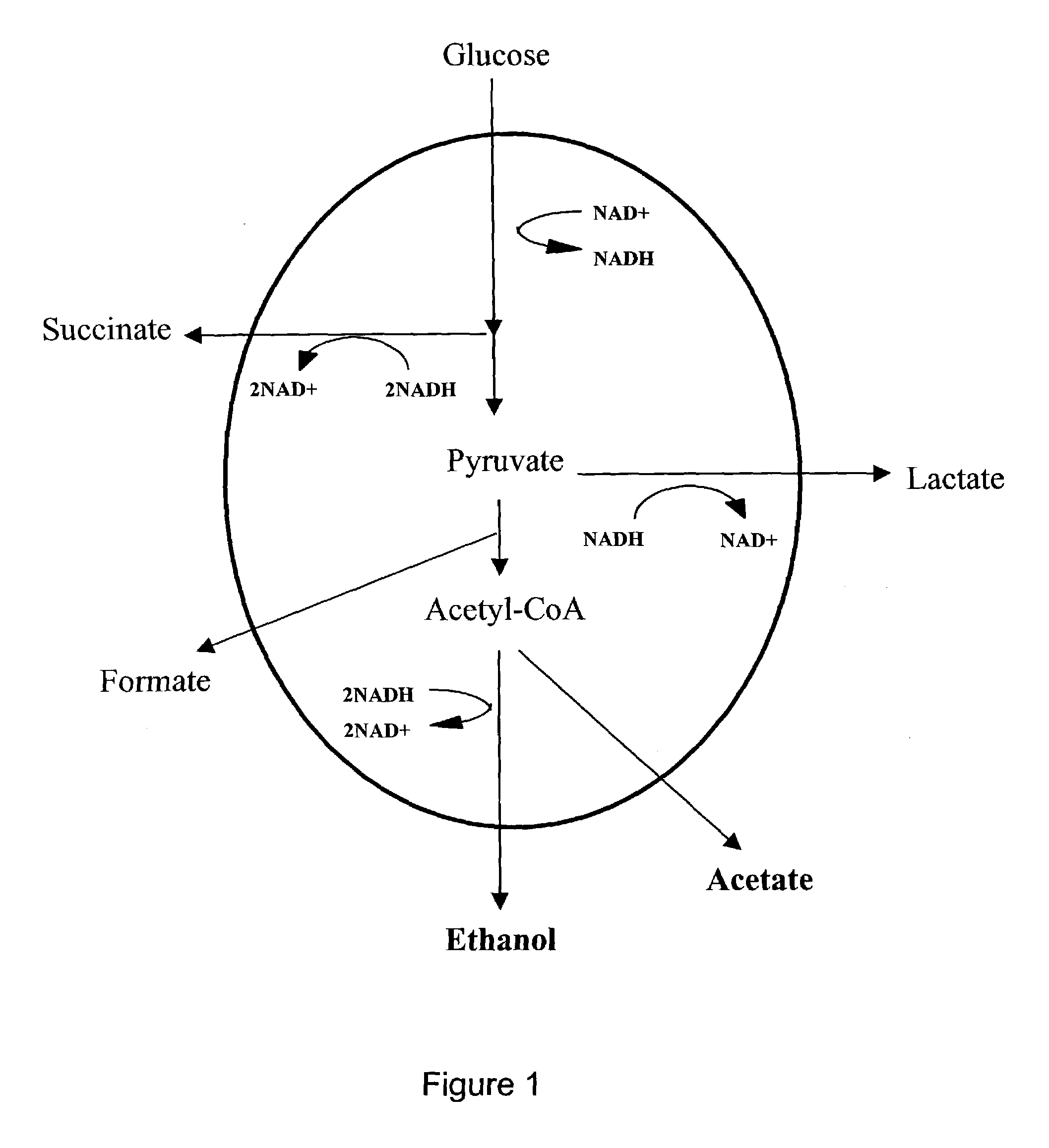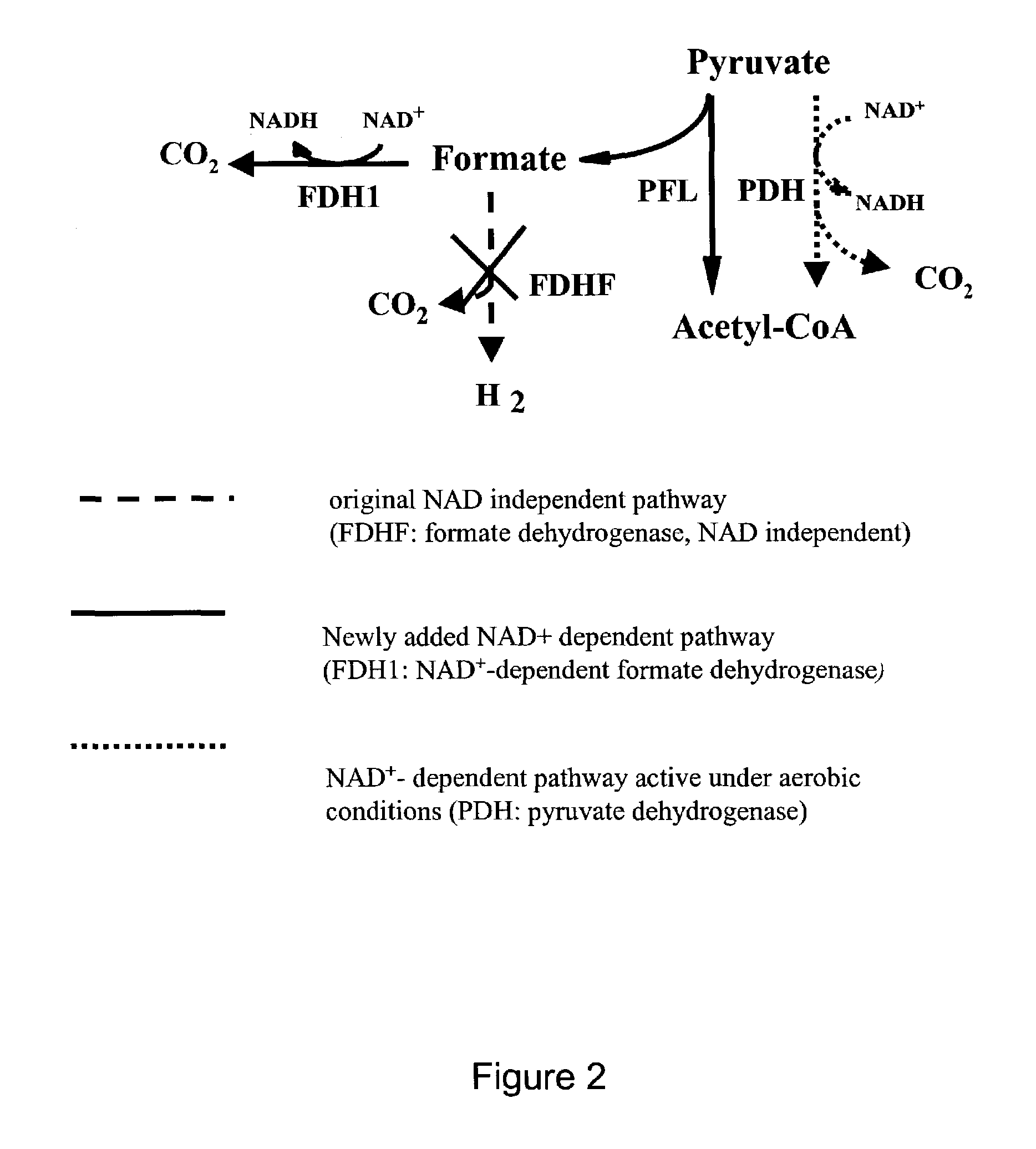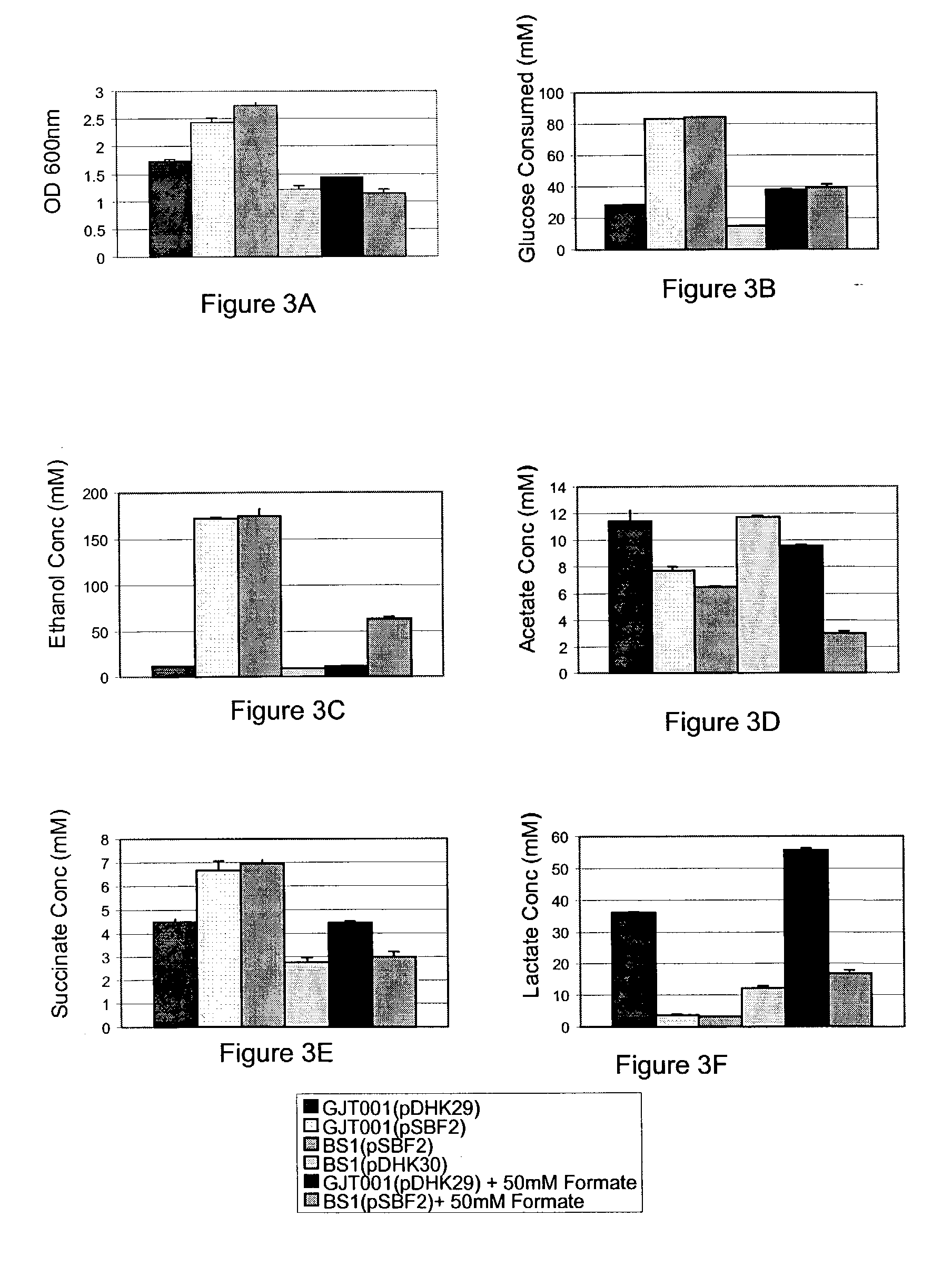Recycling system for manipulation of intracellular NADH availability
a nadh availability and recycling system technology, applied in the field of microorganisms, molecular biology, cell biology and biochemistry, can solve the problems of high cost, increased amount of acetate accumulated in the reactor, and redox reaction of toxic chemicals, so as to increase the intracellular availability of nadh
- Summary
- Abstract
- Description
- Claims
- Application Information
AI Technical Summary
Benefits of technology
Problems solved by technology
Method used
Image
Examples
example 1
Methods to Construct Bacterial Strain and Plasmid
[0106]The strain BS1 was constructed from the strain GJT001 (Tolentino et al., 1992) by inactivating the native formate dehydrogenase. The exemplary plasmid pSBF2 contains the fdh1 gene from the yeast Candida boidinii (SEQ ID NO:1) under the control of the lac promoter. The fdh1 gene encodes an NAD+-dependent formate dehydrogenase (FDH) that converts formate to CO2 with the regeneration of NADH from NAD+. This is in contrast with the native formate dehydrogenase that converts formate to CO2 and H2 with no cofactor involvement (FIG. 2). Also shown in FIG. 2 is the conversion of pyruvate to acetyl-CoA and formate by pyruvate formate lyase (PFL) under anaerobic conditions and to acetyl-CoA and CO2 by pyruvate dehydrogenase (PDH) under aerobic conditions.
[0107]Recombinant bacterial strains and plasmids used in this study are listed in Table 3.
[0108]
TABLE 3Bacterial strains and plasmidsSignificant genotypeStrainsGJT001Spontaneous cadR muta...
example 2
FDH Activity Assay
[0116]Determining FDH activity of strains GJT001 (pSBF2) and BS1 (pSBF2) comprised growing a culture of cells overnight in LB media supplemented with 20 g / L glucose and 100 mg / L kanamycin (Km) under anaerobic conditions. The cultures were inoculated with 100 μl of a 5 ml overnight LB culture and grown in a shaker at 37° C. and 250 rpm. Cells were harvested by centrifugation of 20 ml of culture at 4,000 g and 4° C. for 10 minutes. The pellet was suspended in 10 ml of 10-mM sodium phosphate buffer (refrigerated) at pH 7.5 with 0.1M β-mercaptoethanol and centrifuged as described above. The cells were resuspended in 10 ml of 10-mM sodium phosphate buffer (refrigerated) at pH 7.5 with 0.1M β-mercaptoethanol and sonicated for 6 minutes in an ice bath (Sonicator: Heat System Ultrasonics, Inc. Model W-255; Settings: 60% cycle, max power=8). The sonicated cells were centrifuged at 1,500 g and 4° C. for 60 min to remove cell debris and reduce the NAD background. The formate ...
example 3
Growth Experiments: Anaerobic and Aerobic Conditions
[0117]Growth experiments were conducted on strains GJT001 (pDHK29) and BS1 (pSBF2) by growing aerobically triplicate cultures in a rotary shaker at 37° C. and 250 rpm. The cultures were grown in 250-ml shake flasks containing 50 ml of LB media supplemented with 10 g / L glucose, 100 mg / L kanamycin, and 0 or 100 mM formate. The O.D. at 600 nm was measured every 30 minutes during the exponential growth phase.
[0118]The anaerobic tube experiments were performed using 40-ml or 45-ml glass vials with open top caps and PTFE / silicone rubber septa. Each vial was filled with 35 ml (40-ml vials) or 40 ml (45-ml vials) of LB media supplemented with 20 g / L glucose, 100 mg / L kanamycin, 0 or 50 mM formate, and 1 g / L NaHCO3 to reduce the initial lag time that occurs under anaerobic conditions. The triplicate cultures were inoculated with 100 μl of a 5 ml LB overnight culture. After inoculation, air (6 ml) was removed with a syringe from the headspac...
PUM
| Property | Measurement | Unit |
|---|---|---|
| Mass | aaaaa | aaaaa |
| Mass | aaaaa | aaaaa |
| Fraction | aaaaa | aaaaa |
Abstract
Description
Claims
Application Information
 Login to View More
Login to View More - R&D
- Intellectual Property
- Life Sciences
- Materials
- Tech Scout
- Unparalleled Data Quality
- Higher Quality Content
- 60% Fewer Hallucinations
Browse by: Latest US Patents, China's latest patents, Technical Efficacy Thesaurus, Application Domain, Technology Topic, Popular Technical Reports.
© 2025 PatSnap. All rights reserved.Legal|Privacy policy|Modern Slavery Act Transparency Statement|Sitemap|About US| Contact US: help@patsnap.com



